Growing potatoes in a barrel
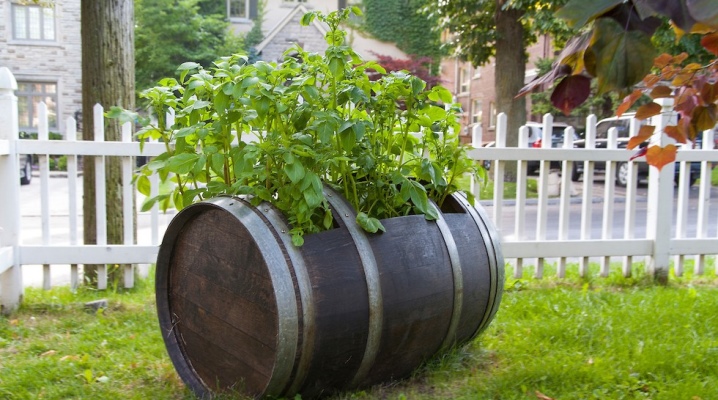
Potatoes are a traditional product for any person, therefore it is difficult to imagine a complete menu without it. There are classic ways to grow potatoes. Recently, the method of growing tubers in a barrel has become popular. His secrets, planting technology and care for the harvested crop will be discussed in this article.
Peculiarities
Potatoes are a popular food. Growing it is a rather laborious process. Many gardeners are trying to modernize this technology, trying to make the work easier. This is how the method of growing crops in barrels appeared. There is an opinion that for the first time it occurred to a farmer to use a barrel as a garden bed, having dropped a few potato tubers into a compost pit.
In the fall, an amazing discovery awaited him, because in a barrel he found a considerable crop of potatoes. Since then, this method has been used by gardeners who prefer to experiment, as well as by those who do not have enough space in the garden to grow tubers. This method of growing has many advantages that are worth mentioning.
- Growing tubers in a barrel will allow you to take up a minimum of space in the garden, which is important for people with a small garden.
- Being in containers, bushes are less susceptible to diseases, they are less attacked by pests.
- There is no need to weed the bushes, huddle them, fight the Colorado potato beetle and other pests.
- Barrel plants do not require additional irrigation.
- Harvesting is faster than growing potatoes outdoors.
- Using this method, you can get a considerable crop of potatoes from just one barrel.
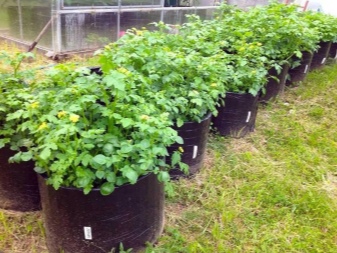
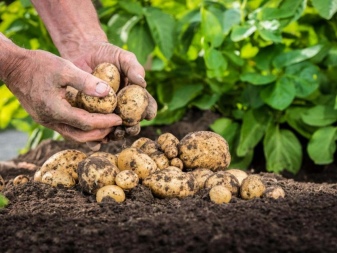
For growing tubers, metal containers are often used, but you can take a wooden or plastic barrel. Old boxes, canvas bags or wicker baskets can also be used as containers. You can also take old car tires and stack them on top of each other.
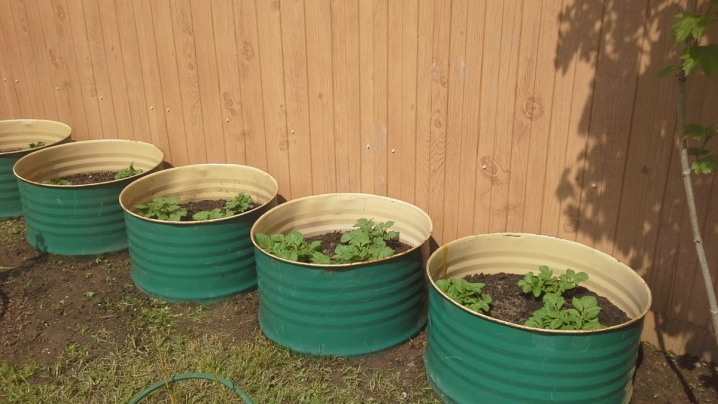
The tubers are planted in a container with a previously removed bottom. This is done so that water does not stagnate in the barrels, which will lead to rotting of the tubers. In addition, earthworms can easily get into containers without a bottom, they will loosen the soil and prevent it from ramming. The productivity of this method can be judged by how many tubers were planted, and how much it turned out in the end result, the volume of any crop will depend on:
- the quality of the planting material;
- selected soil;
- landing scheme;
- the volume of the barrel or other selected container;
- plant care;
- availability of necessary dressings.
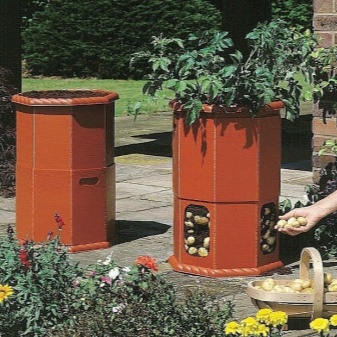
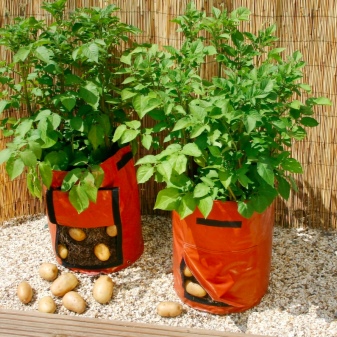
When growing a crop in a barrel, it should be remembered that only high-quality soil should be used in this case.
For this purpose, it is advisable to start preparing the land in the fall. It is necessary to weed the area well, treat it with chemicals that prevent tuber diseases, as well as to destroy pests. This point should not be neglected. If you fill up uncultivated soil, insects will probably start in the barrel, weeds may appear. It will be much more difficult to deal with them inside the barrel, so it is better to do this work in advance.
But one barrel is clearly not enough to get a massive harvest. In this case, it is advisable to take several such containers, which can be difficult. The disadvantage is that it is necessary to take care of a large amount of prepared soil for barrels in advance, which is quite laborious.In the first year, the preparation work will be much more than in the subsequent ones, since you will have to do everything from scratch, harvesting all the components and choosing the optimal place for the barrels.
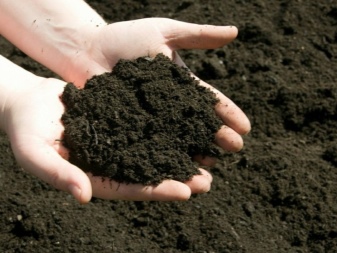
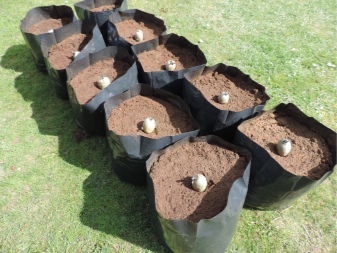
Landing technology
It is difficult to get a good harvest without the use of quality material. The preparation of the tubers is an important step before planting the tubers in the ground.
- Before planting the tubers, it is necessary to select the planting material. It is important that the tubers are of the correct shape and of a standard size. Root crops should not show signs of disease, rot, scab damage.
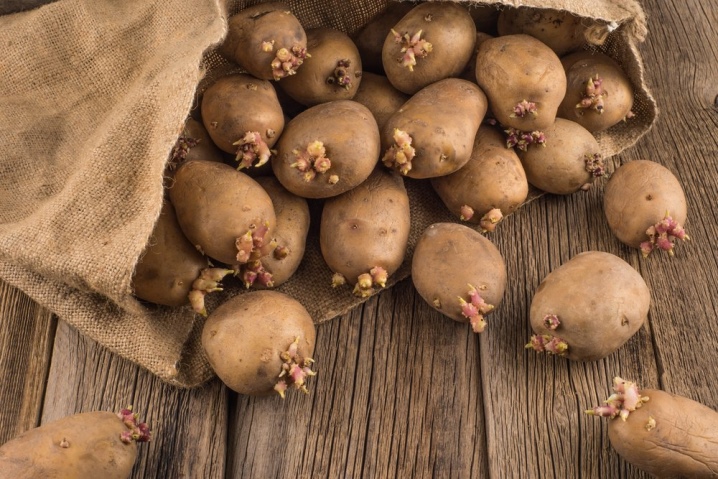
- The optimum temperature for germination is considered to be about 12-15 degrees Celsius.
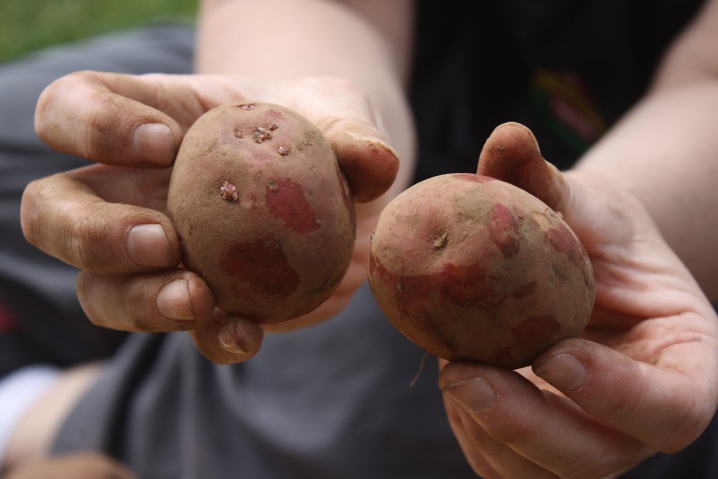
- To get a good harvest will allow soaking the selected tubers in a special solution consisting of superphosphate, boric acid, potassium permanganate, copper sulfate, potassium sulfate, diluted in a bucket of water.
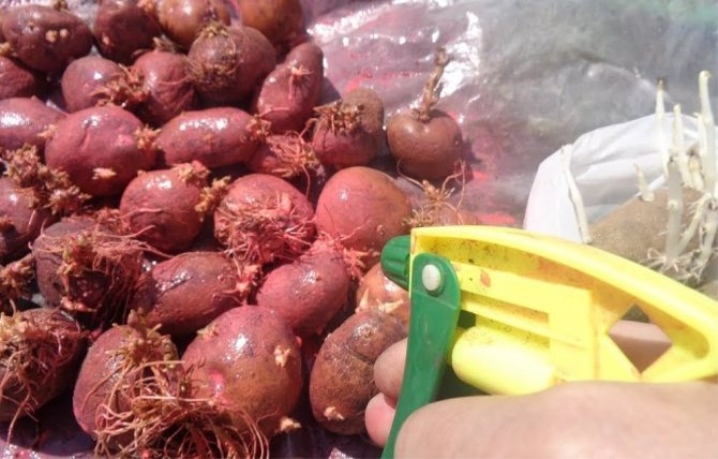
- In the event that the tubers begin to be affected by scab, they are treated with a Bordeaux mixture.
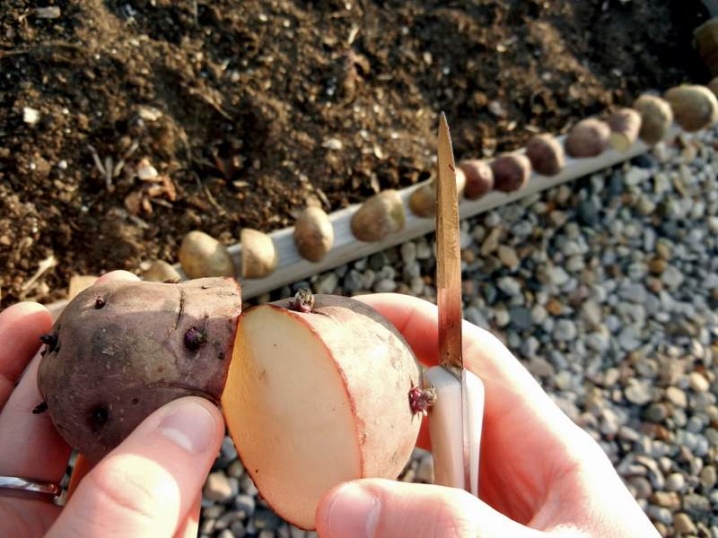
Germinating seed and pre-sowing warming it will increase the yield by almost 2 times. Also, to stimulate plant growth, gardeners recommend making a small incision on each tuber. According to many gardeners, it is not difficult to grow a decent crop of potatoes in the country using the described method. By following the basic technology and following the steps in steps, you can get good quality potatoes in sufficient quantities.
- First of all, you should start preparing containers. Experts recommend removing the bottom of the barrel. Next, you need to make small holes on the sides of the barrel with an indent of 15 cm. Thanks to these ventilation holes, oxygen will feed the soil, which will lead to the successful growth of tubers. When choosing wicker structures, you do not need to make holes, since they are already there, so you don't have to worry about soil ventilation.
- It is worth finding the most suitable place for the growth and functioning of plants with direct access to sunlight.
- For moistening, as well as for applying fertilizer, a hose or pipe with holes made along the length should be lowered into the container. At the bottom, at the base, the pipe must be muffled. The other end of the hose or pipe will be used for watering and ventilation, so it is left outside.
- Then the prepared soil is poured into the barrel by 10 or more centimeters.
- Planting material is spread on the ground in the form of a selected full-fledged tuber or cut potatoes in half. For round containers, tubers are best planted around the perimeter, and for square containers they are staggered.
- The planting material is covered with a layer of earth of about 15 cm. Do not forget that the tuber sprouts should look up.
- After the first green shoots appear, it is necessary to pour another layer of fertilized soil. This will allow the plant to put all its energy into the formation of a powerful root system and not waste energy on the sprouts that have appeared.
- As the sprouts germinate, the soil is filled up.
The earth should be poured until the container is one meter full. It is not recommended to fill the barrel more, otherwise the plant will spend energy on the formation of roots, and not on the formation of tubers.
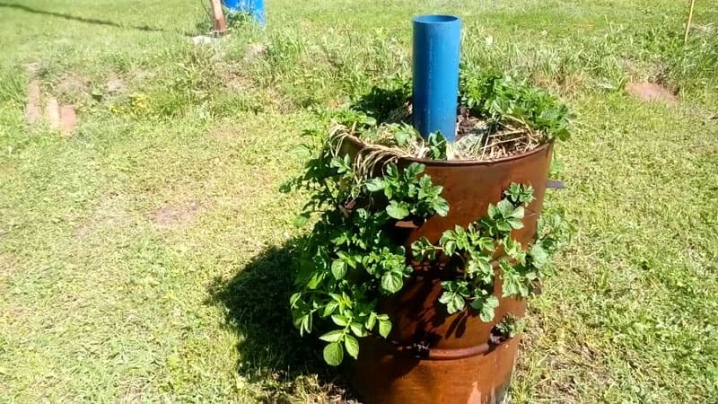
Care
No special care is required immediately after the tubers are planted. It is necessary to remove weeds as needed, apply fertilizers. It is especially important to water the bushes on time, from the planting itself to the harvest. You should also use a cut hose to ventilate the barrel, blow through the soil.
- The tubers in the container do not need constant watering. After the potatoes are rooted, it is enough to water 3 or 4 times during the season. In hot and dry summers, the amount of watering increases.
- It is necessary to feed the plants on time. Finding them in a barrel leads to a rapid depletion of substances necessary for growth.
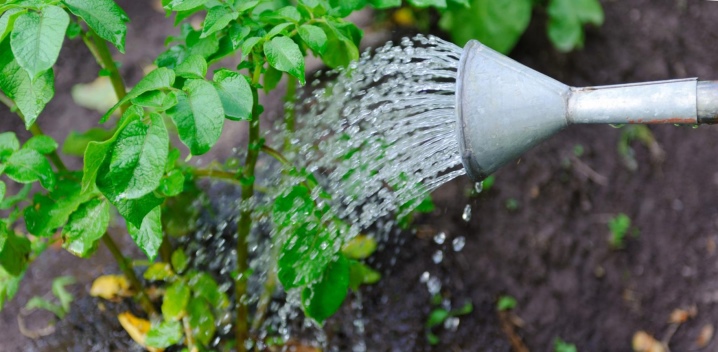
Usually a layer of manure is laid out under the tubers, you can also mix the manure with peat. It is better to apply nitrogen and potash fertilizers when the sprouts grow by more than 10 cm. For a more even distribution of the drug, it should be injected in liquid form, which will allow the components to be distributed in the container and get directly into the tubers. An infusion of siderata in the form of comfrey and nettle can be used by those who prefer organic fertilizers. Such feeding is carried out 1 or 2 times every 7-10 days.
Bushes of an early ripening period are enough to fertilize 1 time. Late potato varieties require 2 feeding times. Fertilizers should not be overused, otherwise it can lead to the accumulation of nitrates in the fruit, which will affect the quality of the crop and its storage.
The first feeding is carried out 14 days after planting the planting material in the ground. In this case, it is advisable to use mullein or chicken manure with the addition of urea. After a powerful mass build-up, phosphorus-potassium compounds are introduced for better tuber formation. About 20-22 days before the start of the harvest, you can carry out the third feeding.
All these measures will enrich the land with the necessary nutrients, and will also contribute to a longer shelf life of the root crops themselves. You can get a good result both when processing green leaves, and when it is introduced directly under the root system.
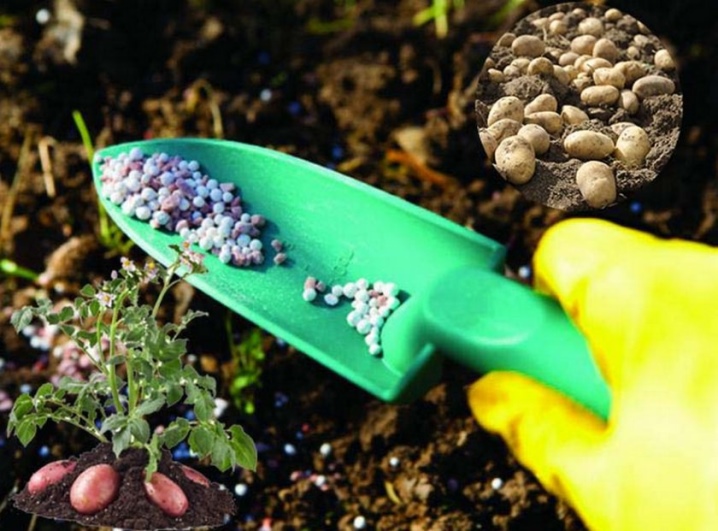
Harvesting
Barrel-grown potatoes ripen earlier than usual. As a result of warming up the soil in closed containers, a faster emergence of seedlings occurs, and this leads to early ripening of tubers. Harvesting is done when the tops turn yellow and dry.
To get a harvest from a barrel, it must be disassembled or simply turned over. Then all that remains is to pick the potatoes out of the ground and send them for storage. The correct construction of the container, sufficient watering and the introduction of fertilizers will allow gardeners to get a decent harvest grown in this way.
After harvesting potatoes, do not throw away the soil. It is suitable for growing root crops in subsequent years. After removing the tubers, it is recommended to sow the barrels with green manure. Subject to the basic rules of planting and caring for potatoes, you can easily get about 3 buckets of tasty potatoes from one large barrel of 200 liters. It should be borne in mind that only 8-10 pieces of selected potatoes were used during planting.
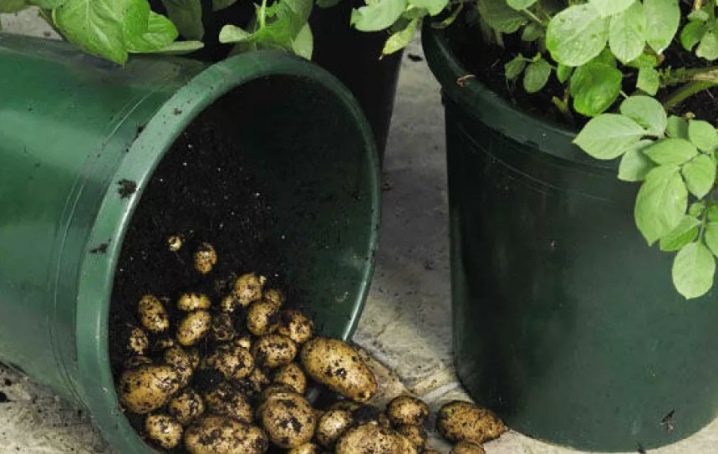
How to grow potatoes in a barrel and increase the yield, see the next video.













The comment was sent successfully.